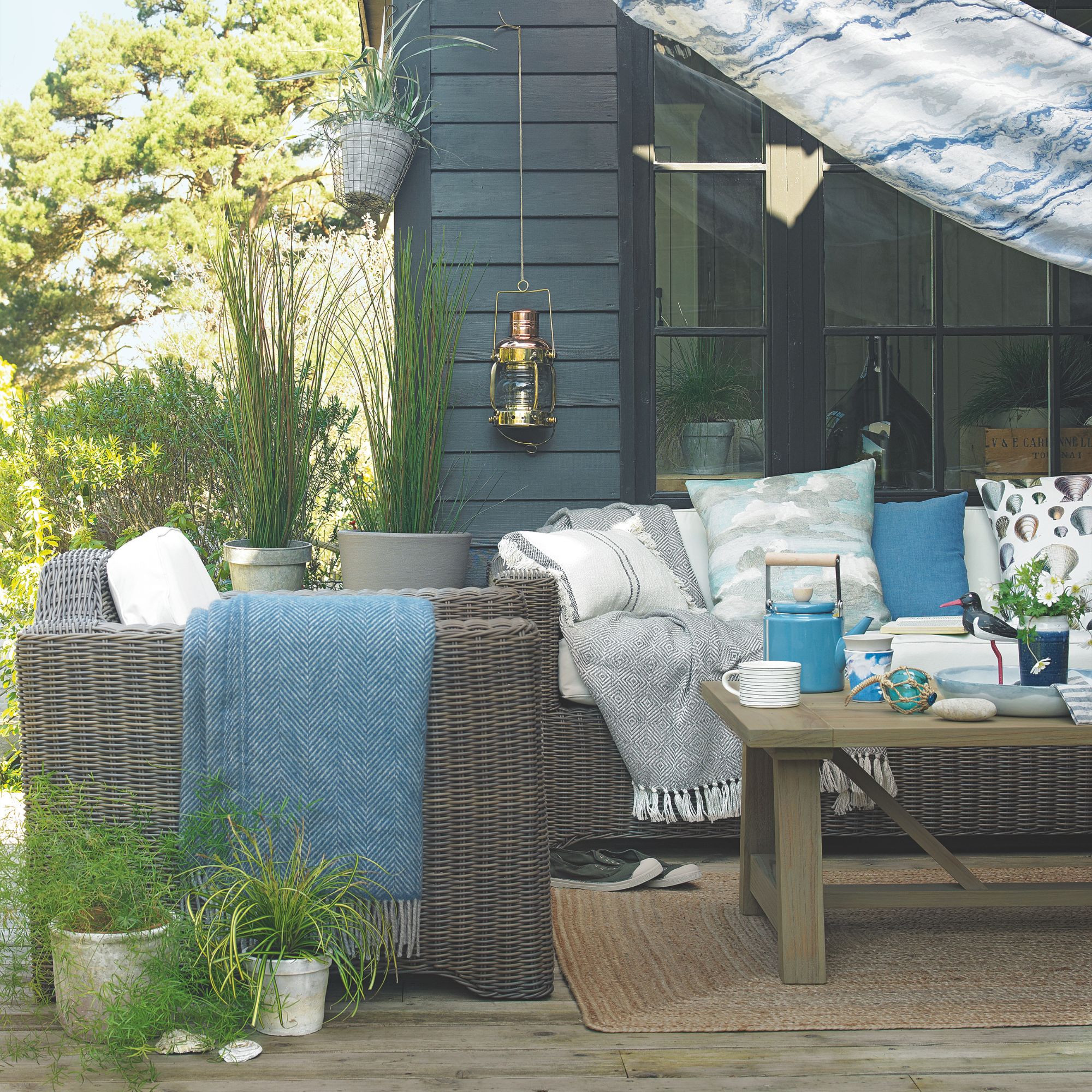
Autumn is finally here, which means garden preparations for the colder weather are underway. Besides putting our plants to bed for the winter, it's a good idea to learn how to weatherproof garden furniture so it can be enjoyed again next year.
Even the best garden furniture ideas can fall prey to the elements, and if you'd rather leave your tables and chairs outside all winter instead of stowing them away with garden storage ideas, you'll need to know how to protect them from the worst of the UK's weather.
Even the most durable type of outdoor furniture can use a little TLC to see it through to spring. We've put together a guide on how to weatherproof garden furniture, whether you own wood, metal or even rattan pieces.
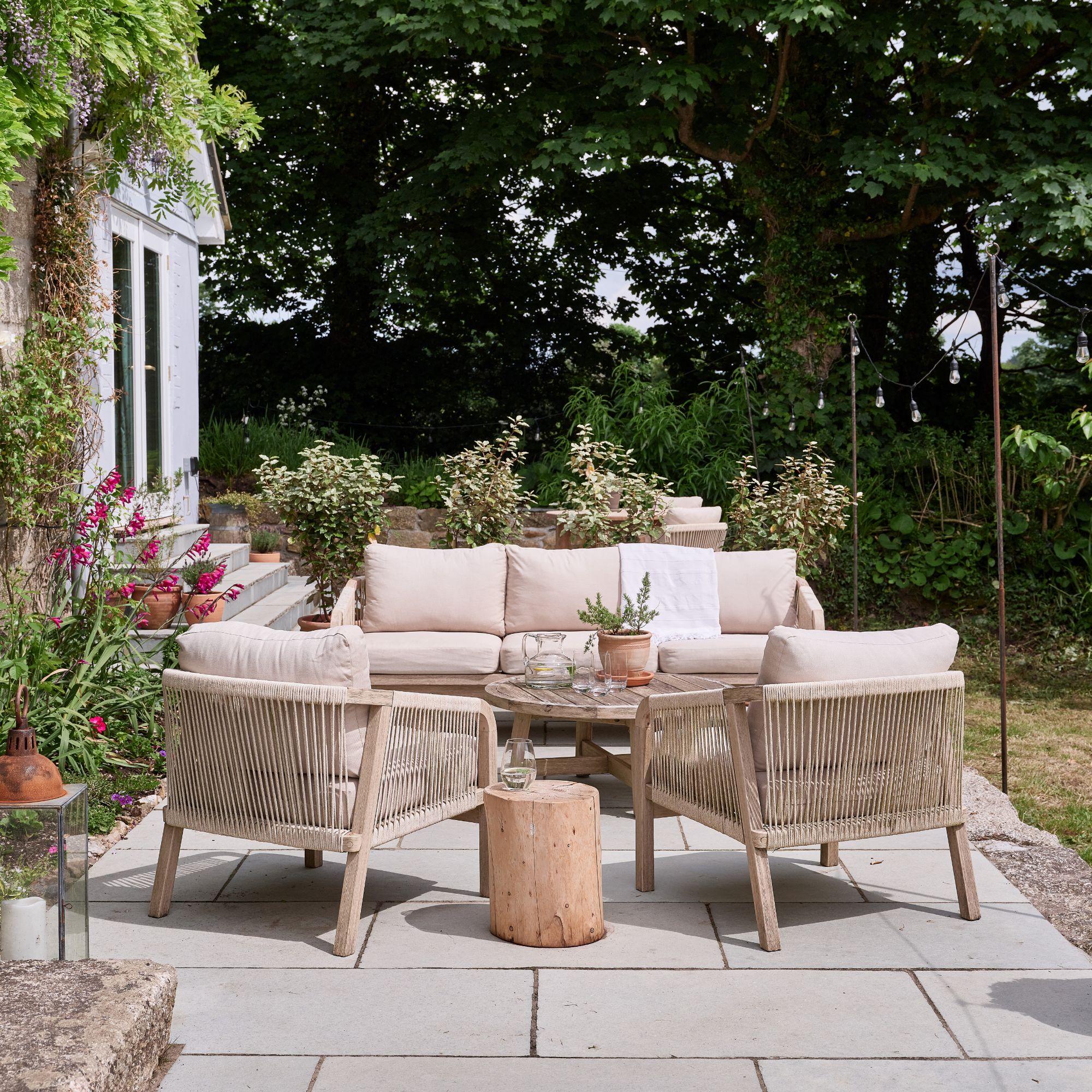
How to weatherproof garden furniture
We've asked the experts how to weatherproof garden furniture and compiled their top tips into this guide. Different materials require slightly different maintenance, so we've broken it down into separate sections for weatherproofing wooden, rattan, and metal furniture sets.
First, we're focusing on wooden garden furniture. 'In the UK, garden chairs and tables, as well as fences and decking, tend to be built using softwoods like larch, pine and cedar,' says Jonathan Kirby, wood expert at Roxil. 'This is because they are more versatile, lightweight and cheaper than hardwoods.
'While they produce beautiful furniture, softwoods are absorbent and therefore vulnerable to moisture ingress, algae, warping and rot, and woodworm. But taking steps to preserve and waterproof wooden furniture when you buy it can prevent this.'
How to weatherproof wooden garden furniture
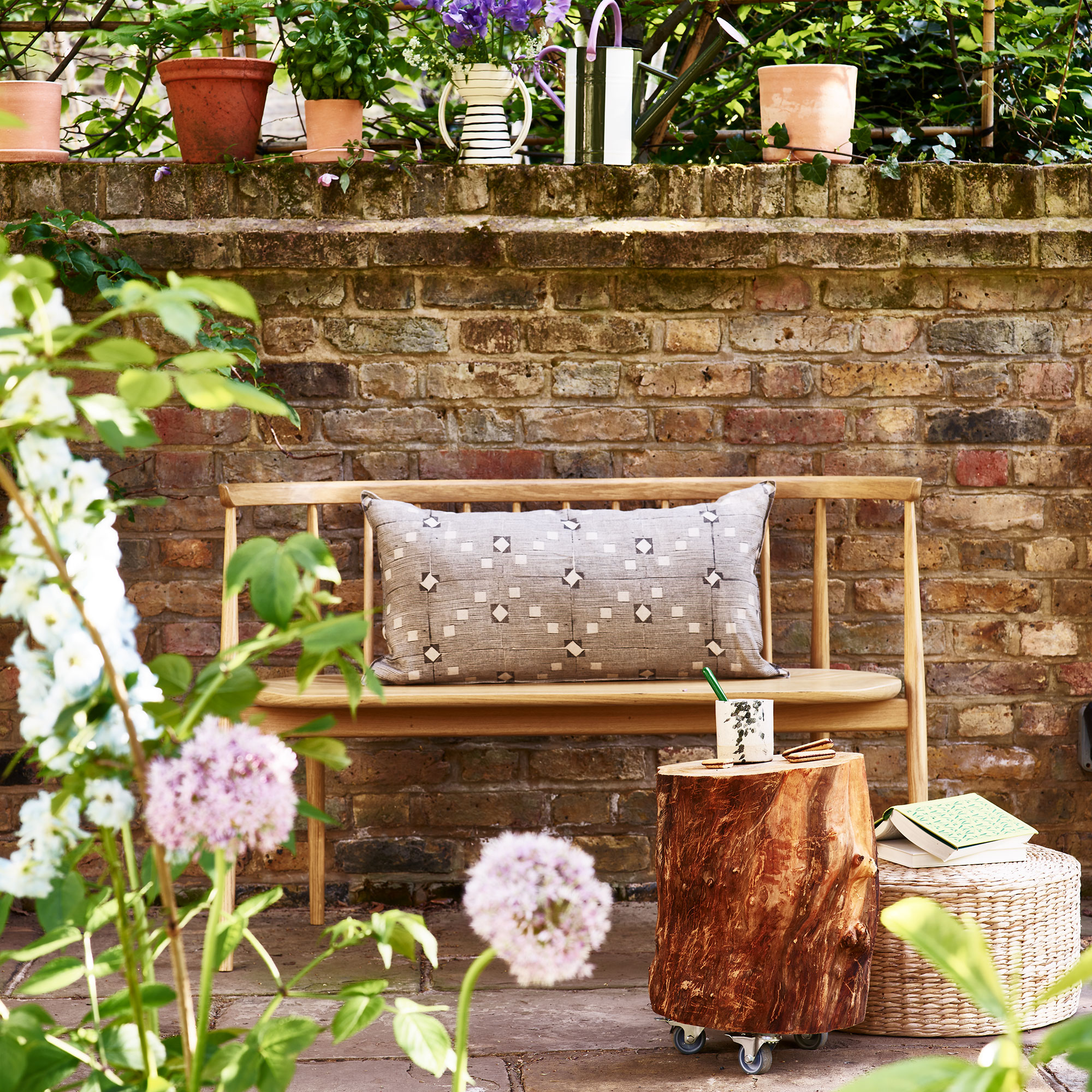
1. Remove dirt and debris
Start by taking a stiff brush like the Charles Bentley Stiff Bassine Wooden Hand Scrub Brush, available at Amazon, to remove any dirt and debris that has found a home there. Cobwebs, dust, and moss need to be cleared away before the furniture can be weatherproofed.
2. Sand the surface
Next, sand the wooden furniture down to achieve a nice, even surface before you apply any protective treatments.
'With some sandpaper, or an orbital sander to save time, remove any rough edges on your wooden garden furniture set', says Samuel Platt, creative design manager at Homebase. 'Make sure to wear some safety goggles and a dust mask while you do this, to protect yourself from any fragments of wood.'
3. Give the furniture a good clean
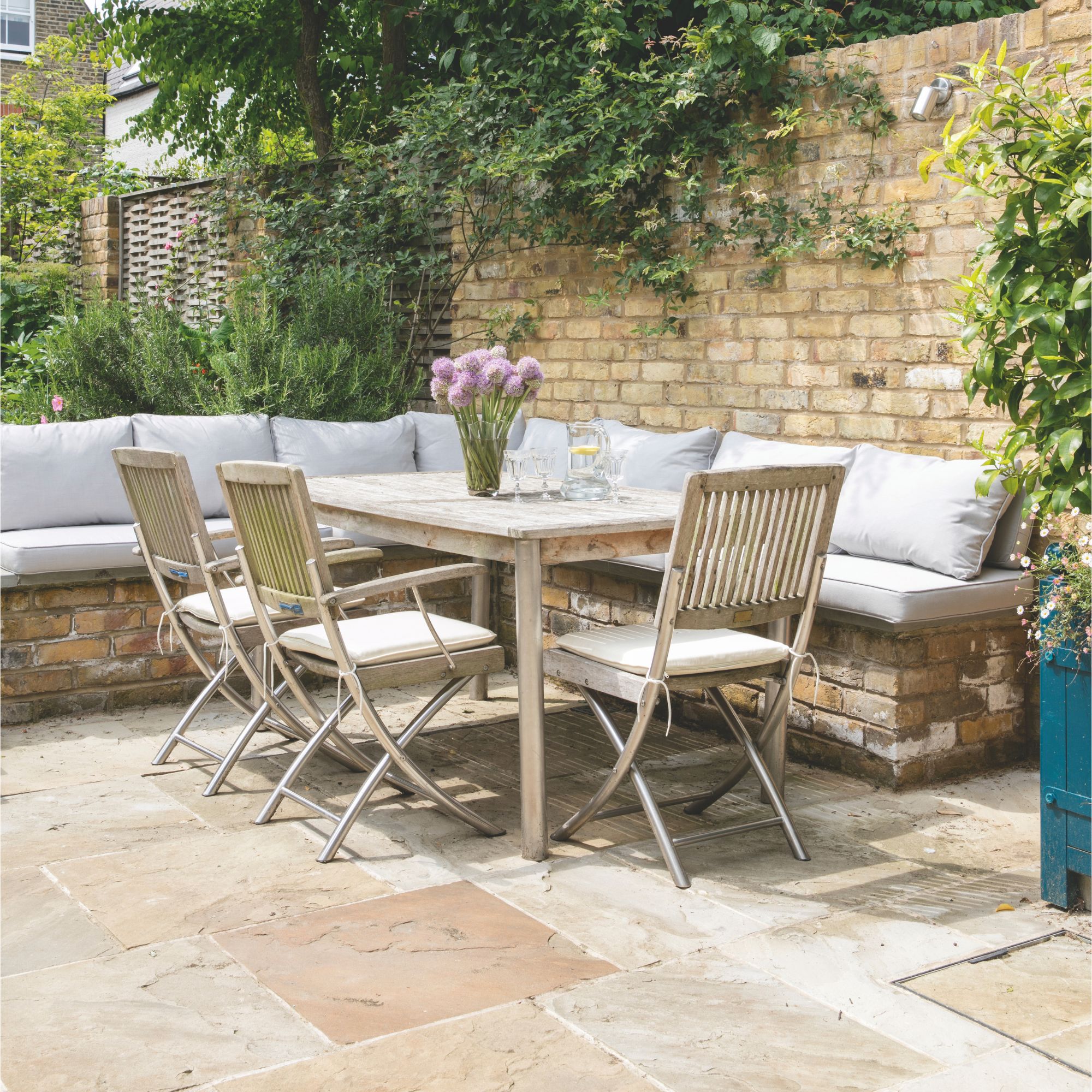
After sanding, use a sponge and warm soapy water to clean the furniture. You can also use a specialist wooden furniture cleaning product, which will help keep dirt at bay.
'Make sure you use the right cleaner for your furniture’s wood,' advises Jonathan from Roxil. 'For hardwood, we’d recommend a biodegradable cleaner like Roxil 100 Wood and Patio Cleaner which you can spray on, leave for an hour, then spray off with plenty of water.
'For softwood, try a wood scrub like Roxil Wood Scrub Gel. Add water to the wood’s surface before applying the gel to aid workability, then leave it for an hour, and scrub with a hard brush.'
Avoid using a pressure washer as this risks stripping some of the timber.
4. Apply a protective treatment
To weatherproof garden furniture, especially wooden furniture, we recommend investing in a protective treatment, and applying this once you've followed the steps above. 'Protector and shield products will ensure your wood retains its colour and becomes water resistant', explains Patrick Bridge, chief operations officer at Harbour Lifestyle.
'Note that if your wooden furniture is brand-new, you should leave it outdoors for around two weeks to ensure all of the natural oils have been removed before applying any protective products. This will ensure the best, longest-lasting results possible.'
Once you've applied the protective treatment as per the manufacturer instructions, your wooden furniture will be much better protected against the elements.
How to weatherproof rattan garden furniture
So, that's wooden furniture sorted. But what about rattan furniture?
'If you're in the market for new garden furniture, hand-woven synthetic rattan is one of the best weatherproof materials to look out for,' says Samuel from Homebase. 'It is completely waterproof and can therefore be left outside with no weather damage – plus, it is easy to clean and maintain.'

1. Keep it clean
To keep your rattan garden furniture in tip-top condition, clean it regularly to prevent dirt and grime from building up.
To start with, the best handheld vacuum cleaners on the market are ideal for removing dry, loose dirt. Then, go in with a sponge and warm soapy water.
'Remove dirt, debris, and bird droppings with a soft brush and mild soapy water,' says patio and garden expert Simon Wardle from Armstrong Cheshire. 'Make sure it is fully dry before covering the furniture back up.'
If any stubborn soil is clinging between the crevices, dip an old toothbrush into the water and use this to clean it out.
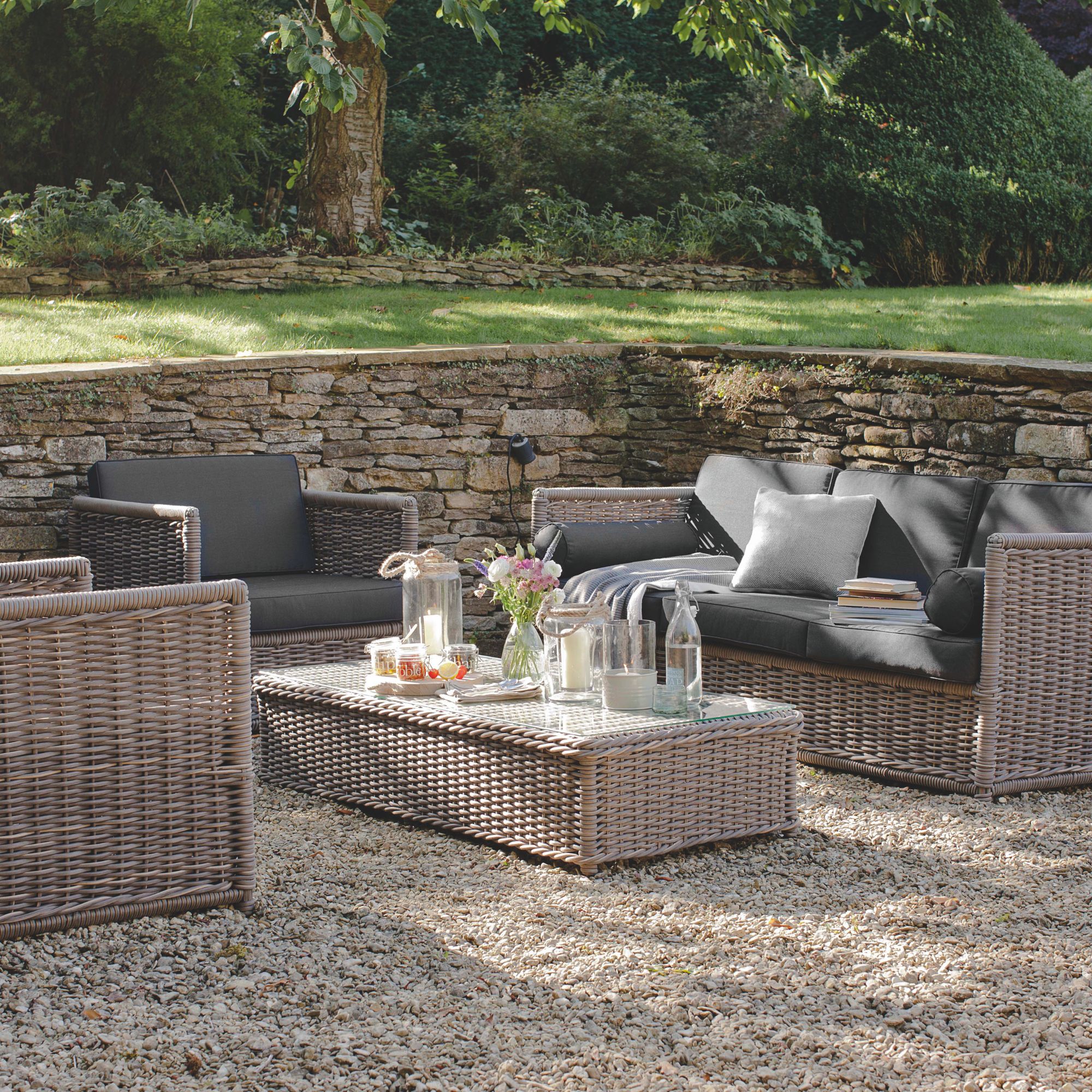
2. Store any fabrics
Something to watch out for when learning how to weatherproof garden furniture is any fabric elements like garden cushions. Dirt and grime will cling to the fabric and then transfer to the rattan, making it harder to keep the furniture in good condition.
Use storage ideas for sheds and other nifty garden storage solutions to keep your cushions away from the elements.
3. Clean fabrics if needed
If the seat cushions are showing signs of mildew, clean them as soon as possible to prevent this from transferring to the rattan and staying around for good.
'Brush away the excess dirt from the fabric and put them in your washing machine with cold water and a cup of chlorine bleach', says Samuel from Homebase. 'Let it soak overnight, and in the morning, drain the water and spin. Allow the covers to dry completely before re-assembling onto your garden furniture.'
How to weatherproof metal garden furniture
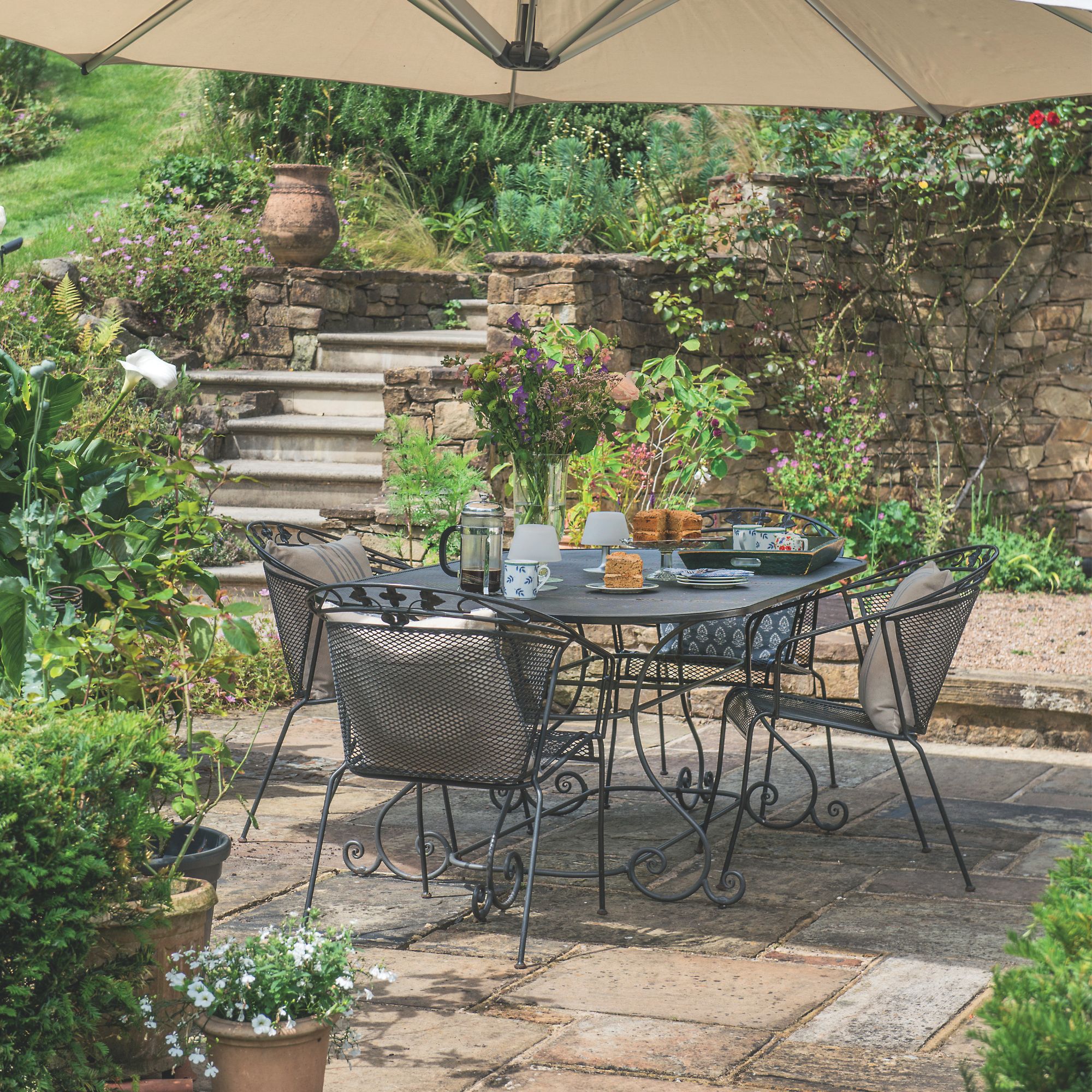
Metal garden furniture is another good option if you're going to keep your furniture outside all year round, and it's naturally more weather-resistant than wood.
'Aluminium or stainless steel garden furniture is a great option if you’re keeping it outside during the wetter months,' says Paul McFadyen, chief executive and metals specialist at metals4U. 'It's more durable than most other materials and are easy to maintain.'
1. Clean the furniture
It comes as no surprise that the first step to weatherproofing metal furniture is to give it a good clean. You can use a hose, a trusty sponge, or even one of the best pressure washers on the market to remove any dirt and debris.
You'll also need to remove any rust from your metal furniture, and you'll likely find all the natural ingredients in your cupboard. Just remember to wear gloves.
'Undiluted, distilled white vinegar can be used to remove rust from metal outdoor furniture that has been damaged by wet weather,' say the experts at metals4U. 'Either spray the vinegar or place a cloth soaked in vinegar on the affected area before rinsing with water or gently rubbing with a steel scourer in the direction of the grain to remove stubborn deposits.'
2. Protect with oil or grease
To stop your metal furniture from rusting in the great outdoors, use a lubricant as a protective barrier. Grease and oil like the Furniture Clinic Boiled Linseed Oil from B&Q will keep oxidation at bay and protect the furniture from corrosion and rust.
3. Finish off with a layer of car wax
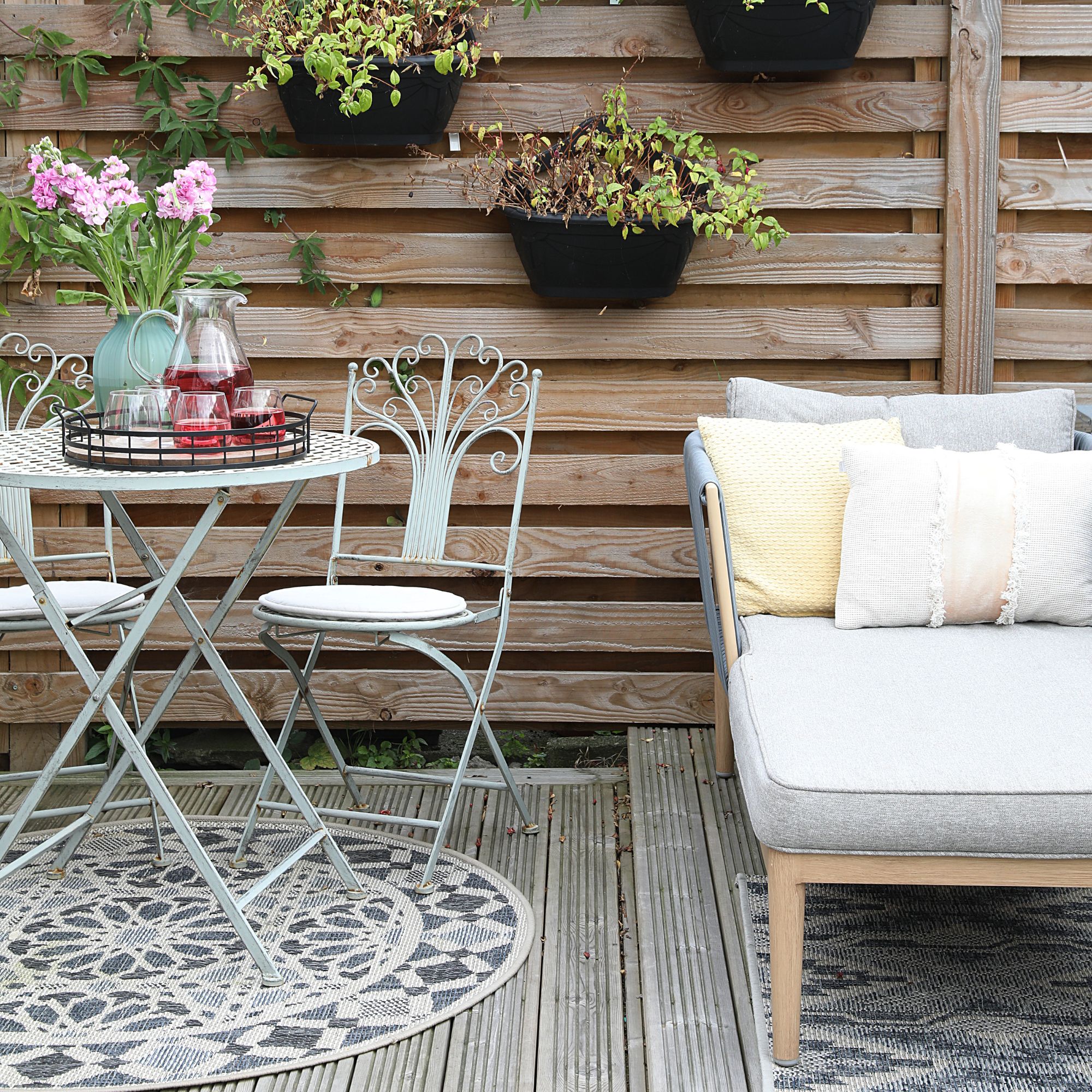
Yes, you read that correctly – experts recommend car wax as one of the best ways to weatherproof garden furniture made from metal.
'An easy way to extend the life of your metal garden furniture is to polish it with car wax after you’ve finished cleaning it,' says Samuel, Homebase. 'This will make it more water resistant and keep it looking good as new for longer!'
Metals4U agrees that car wax makes a great protective layer. 'The wax polishes the metal and provides a water-resistant layer that prevents scratching and rusting. For best results, reapply the wax every 4 to 6 weeks during the autumn period, depending on the weather conditions and how often the furniture is used.'
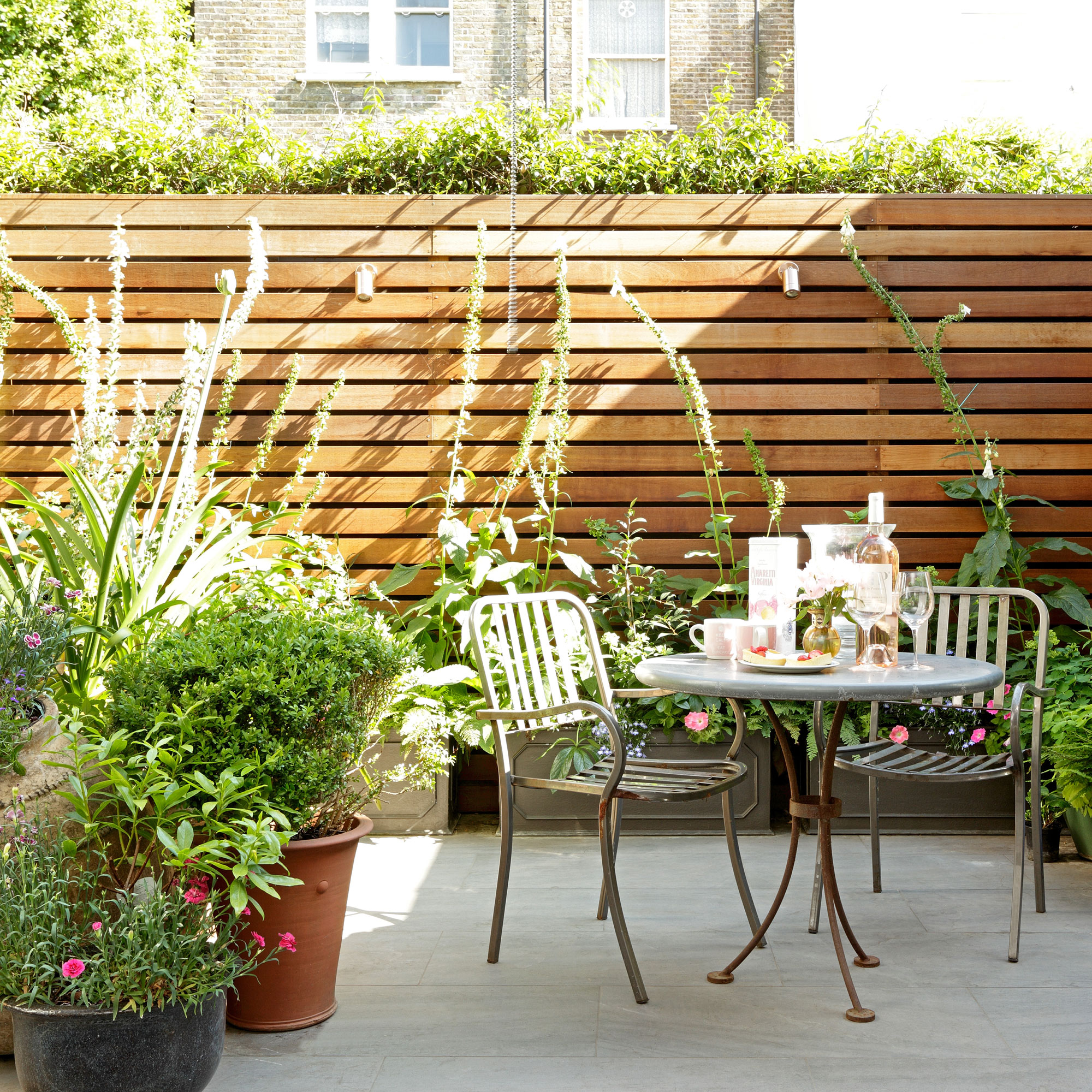
FAQs
What is the best way to preserve outdoor furniture?
To stop wooden garden furniture from rotting, you need to apply a protective varnish.
Ideally, wooden furniture should be stored away when it's not being used for prolonged periods of time, like in the winter. This will keep it safe and dry and away from the wind, rain and snow, all of which can cause wooden furniture to warp and age.
If you don't have enough space to store the furniture in a shed or outbuilding, cover it up overnight instead. 'If your sofa is high-quality, you don’t actually need to protect it in mild weather such as light rain, but during periods of more severe downpours, it is a good idea to ensure it is sheltered,' says Patrick from Harbour Lifestyle. 'So, to store your outdoor sofa safely during the winter, you’re going to want to source a pair of breathable, water-resistant covers.'
How do you make outdoor furniture waterproof?
Although waterproofing garden furniture isn't possible one hundred per cent of the time, weatherproofing often involves applying protective creams and treatments that keep the rain out.
'You can lessen the impact of rain by covering up your furniture, storing it indoors, or, if either of those aren't an option, apply a waterproof sealant or varnish to wooden or metal furniture,' says Simon from Armstrong Cheshire.
Now you know how to weatherproof garden furniture, you can extend the life of your tables and chairs and enjoy them for many seasons to come.







